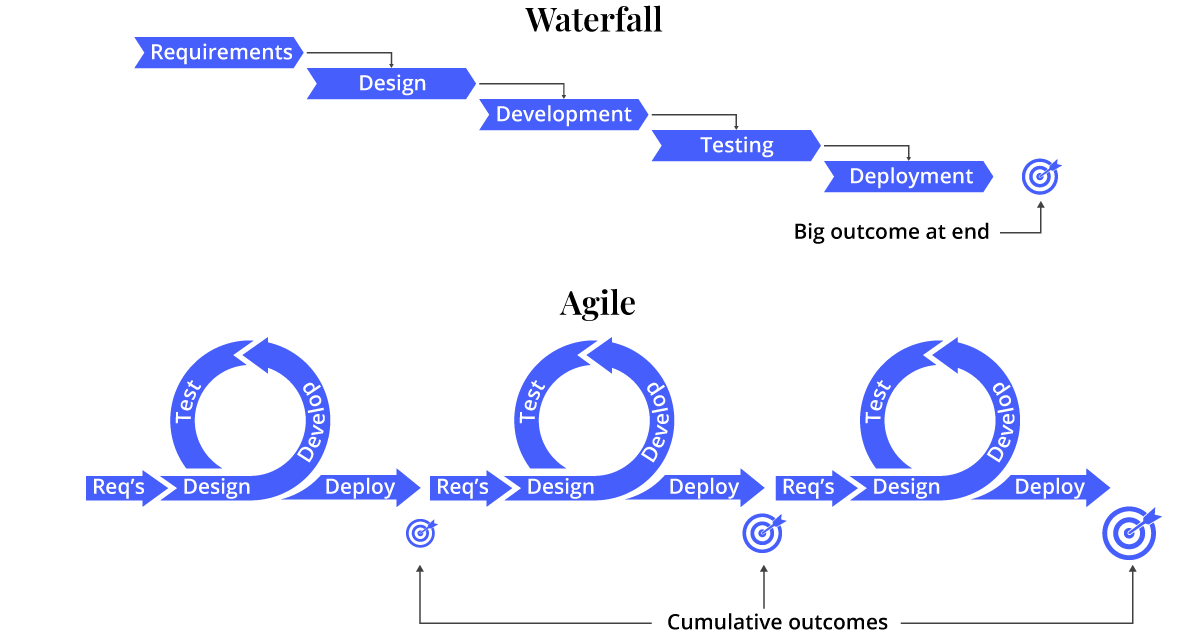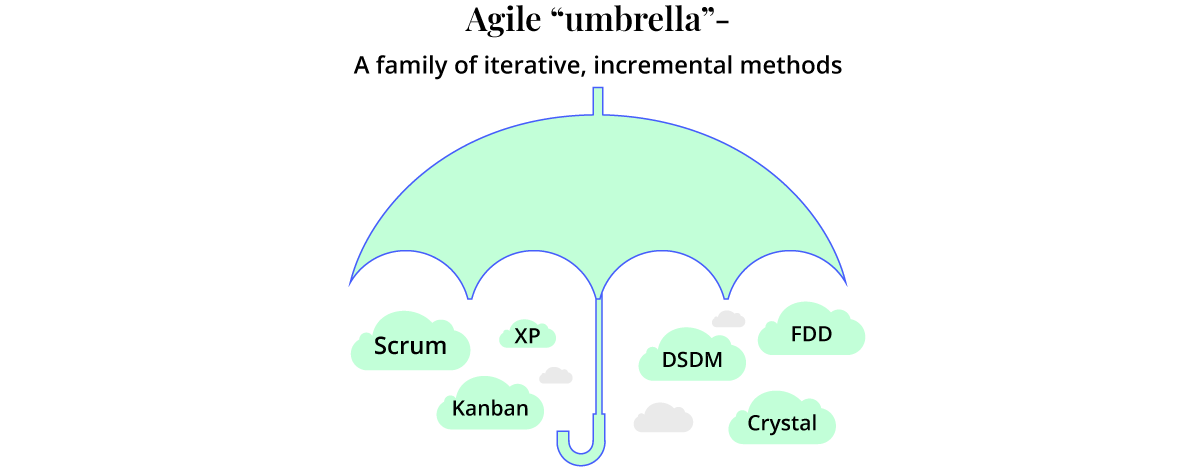PRINCE2®Agile vs PMI-ACP®: What’s Best for You?
Changing industrial trends and the mass adaptability of agile practices have transformed the way organizations work. Over time, a number of project management methodologies have cropped up to suit different industry needs, and today’s business leaders have a wide array of frameworks to rely upon. This has led to the inevitable need for skilled project management professionals who are well-versed in different frameworks. When it comes to the widely popular Agile methodologies, the presence of multiple certifications in agile / agile project management methods can seem overwhelming to aspiring professionals.
This article will give you a comprehensive overview of PRINCE2®Agile and PMI-ACP® (Agile Certified Practitioner) certifications to help you make an informed choice.

Project leading
Due to the accelerated pace of change, today’s enterprises have to cope with the complexities of emergent requirements over the course of a project. Strategic business decisions are often made after taking stock of competitors’ actions, technological advancements, regulatory changes, ongoing business developments and so on. In order to compete and thrive in the future, existing ways of working must be aligned to adapt to these evolving needs.
Example: Today every bank across the globe offers innovative banking products and services like mobile banking applications, ATMs etc. These changes have been adopted to cater to the evolving expectations of customers while adapting to the latest technological advancements.
Projects are the means of introducing change. A collective effort from different stakeholders needs to be pumped into the project initiatives to deliver the products and to accomplish the objectives within definitive timescales.
Example: The Ministry of Health & Family Welfare of a country is planning to design, build, roll-out and implement a Health ID card system for its citizens within a year. This project will benefit the government and its citizens in various ways. Different organizations such as government, health ministry, hospitals, technology providers have to work collaboratively to implement the product within the identified timescale, cost and quality.
 Project Manager planning
Project Manager planning
When different stakeholders come together to deliver a unique product within an estimated timescale and cost, there should be someone who needs to be accountable and responsible to manage the different aspects of the project. Project management broadly revolves around key activities such as plan, execute, monitor and control. Management of projects is an art which includes skills like leadership, domain knowledge, interpersonal skills, people management, powerful communication, stakeholder engagement, conflict management, business acumen etc.,
Example: A central library run by a private firm is looking to launch a digitized version of its books. A Project Manager is identified to manage the scope, cost, time, quality, risks, resources, stakeholders, communications etc., from the beginning to the end of the project.
Project managers and their organizations can choose to apply the right methods, tools, techniques, standards, guidance, good or best practices to run their projects.
As digital transformation is catching up with many organizations, business demands are also increasing, and the requirements for products and services is continually evolving as well. To meet the demands of businesses today, project-driven organizations should look for ways to increase the speed of product delivery while upholding quality. Agile project management is an iterative approach to delivering a project throughout its life cycle. The Agile framework helps project managers to stay on top of emergent requirements and adapt to change more readily, delivering products that are better aligned with customer expectations.
With agile methods such as Scrum being widely accepted and used in today’s organizations for software development projects, more agility is seen in the delivery teams. Product development in Scrum teams occurs in shorter iterations/timeboxes (2 weeks to 4 weeks). This is because the goal is to deliver minimum viable products (MVP) or a feature/functionality within shorter sprints.
Example: As a part of digital transformation, a school wants to launch a mobile app. In the beginning of the academic year, the first section of the app was ready and launched for use. During the launch, it only had a login and a digital diary feature. In the second month, they added a few more features such as timetable, attendance tracker. In the third month, new enhanced features such as progress card, online payment options were added. By the end of six months, the app had varied features to suit the needs of the school, teachers, students and parents and it added value to all categories of stakeholders iteratively.

The Contrast of Waterfall Vs. Agile ways of working:
The reason for agile’s popularity is because of its ability to address the new demands being placed on the project team.

Prince2 Processes
PRINCE2® (PRojects IN a Controlled Environment) is widely considered the leading project management method. It is a unique, light weight, scalable, flexible, highly tailorable, principle–driven, agile enabled framework to run your projects.
PRINCE2 revolves around the concepts of principles (value statements), themes (focus areas to run the project) and processes (steps involved to accomplish project objectives).
Let’s get introduced to the PRINCE2 elements:
PRINCE2® Process Flow Diagram:
Processes are at the core of the PRINCE2 framework. Application of themes, principles and tailoring of the processes makes it easy to adopt and adapt which reduces the bureaucracy of project management. At the same time, it provides the proper governance to keep the projects justified.
Project Environment
If PRINCE2® is already agile, what is PRINCE2 ® Agile?
PRINCE2® Agile guidance is all about tailoring PRINCE2 to incorporate Agile methods. PRINCE2 is a neutral project management framework which can support both traditional waterfall projects as well as agile or adaptive or iterative projects.
To provide guidance on how to integrate high velocity models or practices into the existing projects for both IT and non–IT industries, PRINCE2 Agile considers Scrum, Kanban, Lean approaches. The intention is not to explain all the agile frameworks in detail; but rather is to show practitioners how to amalgamate PRINCE2 with other agile practices. PRINCE2 considers agile as a collection of behaviours, concepts, frameworks and techniques.
In a nutshell, PRINCE2® Agile is basically a marriage between PRINCE2 and Scrum practices.
 PRINCE2’s core concepts of principles, themes and processes are tossed up with agile concepts, techniques, behaviours, practices which fuels more velocity into the existing framework.
PRINCE2’s core concepts of principles, themes and processes are tossed up with agile concepts, techniques, behaviours, practices which fuels more velocity into the existing framework.

PRINCE2® Agile has two levels of certification (Foundation and Practitioner)
Foundation Exam:
Prior project management experience is not required to take up the certification.

The Project Management Institute’s Agile Certified Practitioner is a credible certification which provides thorough knowledge to project managers using agile methodologies. 
There are many agile practices other than Scrum that are widely used in the industry such as eXtreme Programming, DevOps, Test Driven Development (TDD), Behaviour Driven Development (BDD), Feature Driven Development (FDD), Crystal, Scaled Agile Framework (SAFe), Disciplined Agile Delivery (DAD), Dynamic Systems Development Method (DSDM), Kanban, Lean Product Development etc., Most of these practices revolve around the core concept of iterations with other variations. Most of these practices are ‘IT-only’ frameworks.
Agile mindset and principles play a vital role in executing the projects in a different way as compared to the traditional ways. Right from covering the concepts of agile values, mindset, practices, terminologies, most of the above-mentioned agile models are covered in a greater detail in this program.
Concepts and techniques like agile contracting, agile risk management, earned value management (EVM), cumulative flow diagrams (CFD), estimation techniques, relative prioritization, work in progress (WIP) limits, Kano analysis, product backlog grooming, personas, user stories, story maps, wireframes, product road map, minimum marketable feature (MMF), definition of done, continuous integration, burn charts, stakeholder engagement, leadership, building agile teams, coaching, osmotic communication, timeboxing, planning poker, release planning, problem solving, lead time, cycle time, defect rate, control limits, throughput, velocity, variance and trend analysis, value stream mapping, continuous improvement, retrospectives, learning cycles etc., are imparted as a part of this certification course.

Every practice has its own strength and weakness. Ultimately, it is up to the organizations and practitioners to choose the right project management methodologies to suit their needs and business/career goals.
Research & References of PRINCE2®Agile vs PMI-ACP®: What’s Best for You?|A&C Accounting And Tax Services
Source
0 Comments